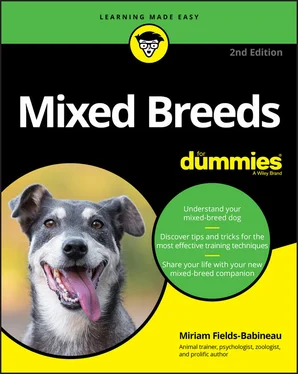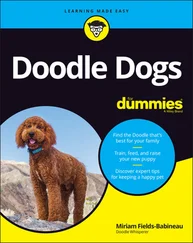Also, it’s true that I have lots of credentials — from degrees to publications to hands-on experience — but this book isn’t about my standing up on a soapbox and lecturing you. I know you’re busy, so in this book, I tell you only what you need to know and nothing that you don’t.
If you’re short on time, you can safely skip the sidebars (text in gray boxes) — the information they contain is interesting but not critical. You can also skip any paragraphs marked by the Technical Stuff icon (see “Icons Used in This Book,” later in this Introduction, for more information).
Within this book, you may note that some web addresses break across two lines of text. If you’re reading this book in print and want to visit one of these web pages, simply key in the web address exactly as it’s noted in the text, pretending as though the line break doesn’t exist. If you’re reading this as an e-book, you’ve got it easy — just click the web address to be taken directly to the web page.
Because you’ve picked up this book I assume you’re not a dummy. You’re either thinking of getting a mixed-breed dog or you already own one. Plus, the fact that you want to find out more about your dog makes you exceptionally intelligent. I make some other assumptions about you:
I assume you have, or are about to get, a mixed-breed dog because you wanted a unique individual to love and live with.
I assume that you want just the facts you need to make certain you accomplish your goals. You don’t want all the scientific jargon and terminology explaining the background of each topic.
I assume you have a big heart to take on a dog and give her a happy home.
Icons are those little eye-catching pictures in the margin of this book. These icons are eye-catching for a reason: They flag important information. Here’s what they mean:
 The Tip icon helps you solve problems faster or explains an easier way to approach an issue.
The Tip icon helps you solve problems faster or explains an easier way to approach an issue.
 The Warning icon prevents you from doing something dangerous to your dog, yourself, or others. Heed this icon!
The Warning icon prevents you from doing something dangerous to your dog, yourself, or others. Heed this icon!
 The Technical Stuff icon precedes interesting information, though not vital to your mixed-breed dog’s well-being. Although you really don’t need to read the information preceded by a Technical Stuff icon, you won’t lose much time doing so, and it may help you understand your dog better.
The Technical Stuff icon precedes interesting information, though not vital to your mixed-breed dog’s well-being. Although you really don’t need to read the information preceded by a Technical Stuff icon, you won’t lose much time doing so, and it may help you understand your dog better.
 The Remember icon helps you stay on track in maintaining your dog’s health and well-being. This information is so important I may say it twice!
The Remember icon helps you stay on track in maintaining your dog’s health and well-being. This information is so important I may say it twice!
In addition to the book you have in your hands, you can access some extra content online. Check out the free Cheat Sheet for questions to ask when adopting a dog, tips on temperament testing, and a checklist of supplies to have on hand. Just go to www.dummies.com and type Mixed Breeds For Dummiesin the Search box.
Because this book is written in a modular manner — with each chapter a standalone unit — you don’t have to read everything in order. In fact, if you already have a mixed-breed dog, you won’t need to read the chapters on where to find a dog, nor will you need the information on making sure the dog is right for you. If you get a designer dog, you might want to find out more about how to train her than solve problems that she likely hasn’t developed. Or, if you’ve had a mixed-breed dog for many years and are curious about the changes he’ll be going through as he ages, you may want to skip to the chapter about senior dogs. Use the Table of Contents and Index to find the chapters that appeal to you now, and come back to this book as your needs and interests change.
Regardless of where you begin reading, you’re sure to discover new things giving you the inspiration to spend time with your mixed breed and enhance your lives.
Yours is a partnership for life. Have fun together!
Part 1
Getting Started with Mixed Breeds
IN THIS PART …
Find out what makes a mixed-breed dog a mixed breed.
Look at what goes into a designer dog.
Decide which mixed breed you want.
Meet and pick out the dog who’s right for you.
Chapter 1
Mixing It Up: Introducing the Mixed Breed
IN THIS CHAPTER
 Understanding what makes a dog a mixed breed
Understanding what makes a dog a mixed breed
 Recognizing that size doesn’t matter — a dog is a dog
Recognizing that size doesn’t matter — a dog is a dog
 Remembering that your dog — no matter his mix — wants to be your best friend
Remembering that your dog — no matter his mix — wants to be your best friend
The offspring of purebred dogs all look alike on the outside, and have similar personalities and temperaments. You can’t say that about mixed-breed dogs. No two are exactly alike — even those from the same litter. Although their environment has a lot of impact on their future behavior, they still have specific genetic codes that are difficult to decipher.
Mixed-breed dogs — especially so-called “designer dogs” — have recently experienced a surge in popularity. Though actually hybrids — the offspring of two purebreds — designer dogs are highly prized for their unique characteristics. Designer dogs are very expensive, because they’re in short supply and highly desired.
Very small mixed breeds have also become very popular. They’re easy to transport, can be carried in a handbag, and offer all the affection and playful antics of their larger cousins. From 3 to 7 pounds, so-called “pocket dogs” are gaining ground, probably fueled by the fact that they’re carried by their celebrity owners down the red carpet. Many of the current, popular pocket dogs are hybrids — the mix of two very small purebred dogs.
Most dogs — regardless of their breed or size — merely want to be with their human companions. Your dog looks to you for direction, companionship, food, shelter, and understanding. In return, your dog offers friendship, trust, and love. He’ll never grow up and move away, he’s there when you need someone to talk to, and he’s always ready to join in a game. Your dog doesn’t have to be purebred to fulfill your needs. After all, your dog doesn’t know what purebred is — all he knows is that he wants to be with you.
A Mutt by Any Other Name: Defining Mixed Breeds
A mixed-breed dog is one who has been conceived by two different purebred or mixed-breed dogs. The parentage of many mixed-breed dogs is unknown, because the breeding wasn’t planned. Two unsterilized dogs crossed paths when the female was in heat, and the rest is history.
Mixed-breed dogs are sometimes called mutts, mongrels, or Heinz 57 dogs. No matter what they’ve been called, they haven’t traditionally been the sought-after purebred dog that people pay a lot of money to buy.
Читать дальше

 The Tip icon helps you solve problems faster or explains an easier way to approach an issue.
The Tip icon helps you solve problems faster or explains an easier way to approach an issue. The Warning icon prevents you from doing something dangerous to your dog, yourself, or others. Heed this icon!
The Warning icon prevents you from doing something dangerous to your dog, yourself, or others. Heed this icon! The Technical Stuff icon precedes interesting information, though not vital to your mixed-breed dog’s well-being. Although you really don’t need to read the information preceded by a Technical Stuff icon, you won’t lose much time doing so, and it may help you understand your dog better.
The Technical Stuff icon precedes interesting information, though not vital to your mixed-breed dog’s well-being. Although you really don’t need to read the information preceded by a Technical Stuff icon, you won’t lose much time doing so, and it may help you understand your dog better. The Remember icon helps you stay on track in maintaining your dog’s health and well-being. This information is so important I may say it twice!
The Remember icon helps you stay on track in maintaining your dog’s health and well-being. This information is so important I may say it twice! Understanding what makes a dog a mixed breed
Understanding what makes a dog a mixed breed










